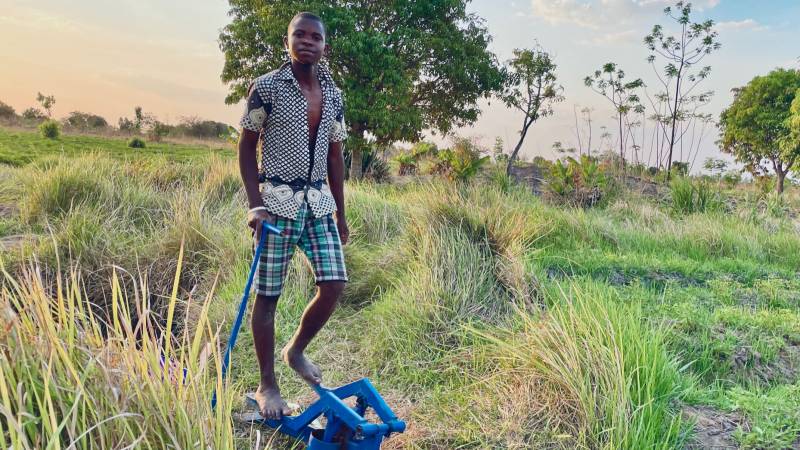In rural Malawi, farmer Duma Ali stands in his field on some kind of grading machine. It pumps groundwater by making progressive movements. After a few hours of riding the motorcycle, he became exhausted. He’s getting old one day, but he’s still grateful for his pump. Because without it he wouldn’t.
He says he was able to count on the rain. But this is in the past. “Then it gets too wet again and the seeds or young plants wash out, then they dry out too hard again and the crops die.” In recent years, his family has suffered from starvation. “The irrigation pump put an end to that. Fortunately, we have ground water here and can now also grow adequately in dry spells.”
One of the main themes for poor countries at the Glasgow Climate Summit is: More money is needed To respond to climate change, the so-called adaptation. This includes, for example, watering, but also seeds that can better withstand high temperatures, or homes that can withstand a hurricane.
Low emissions, many consequences
Poor countries contribute little to climate change, and it is estimated that Africa is responsible for only 4 percent of global greenhouse gas emissions. But African countries are a huge victim. Like Malawi, a country that has experienced seven droughts and 19 floods in the last half century.
Twelve years ago at the Copenhagen Climate Summit, it was agreed to provide $100 billion annually starting in 2020 for adaptation and “mitigation,” reducing greenhouse gas emissions, for example through sustainable energy. Discussion topic in Glasgow: This amount has never been achieved and too much has been spent on mitigation (reducing emissions) and not enough on adaptation and response to climate change.
“But adaptation is actually critical for people to make themselves resilient,” says Professor Sustin Chiuta from Malawi, now also in Glasgow. “People want to take care of themselves, but they can’t always do that.” He asserts that we do not want to beg, but that we need the means to save ourselves.
Climate money goes mainly to large organizations.
Chiuta is a respected climate scientist in Malawi. It was the leader of his organization who brought Moda Ali’s farm community a number of irrigation pumps. But it was not of the best quality. Three is already broken, the handle of the fourth is loose. “This is what we can afford.”
His organization wants funds to create a better irrigation system, in which electricity is generated using solar energy that is used to pump water: mitigation and adaptation in one fell swoop. Three years ago, he applied for accreditation from the Green Climate Fund, which manages a large portion of the climate funds, but he has yet to receive it. “Climate money goes mainly to large international organizations such as various branches of the United Nations and the World Bank. It is difficult to intervene as a smaller local player.”
This is confirmed by Daan Robben and Annelieke Douma of Both ENDS, an organization that advocates for the possibility of turning to small local social organizations for funding. “The numbers show that less than 10 percent of climate finance goes to the local level. There are a lot of organizations queuing, but the majority goes to large organizations while local organizations have valuable networks and knowledge.”

“Coffee buff. Twitter fanatic. Tv practitioner. Social media advocate. Pop culture ninja.”











More Stories
Which can cause an increase in nitrogen.
The Central State Real Estate Agency has no additional space to accommodate Ukrainians.
The oystercatcher, the “unlucky national bird,” is increasingly breeding on rooftops.